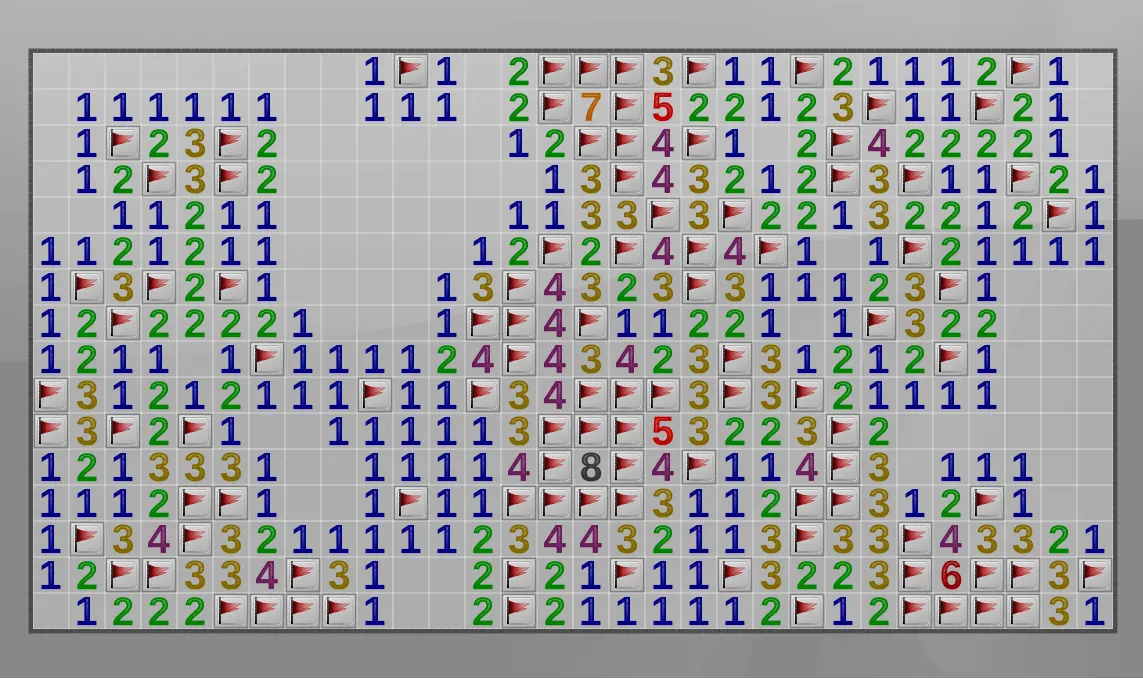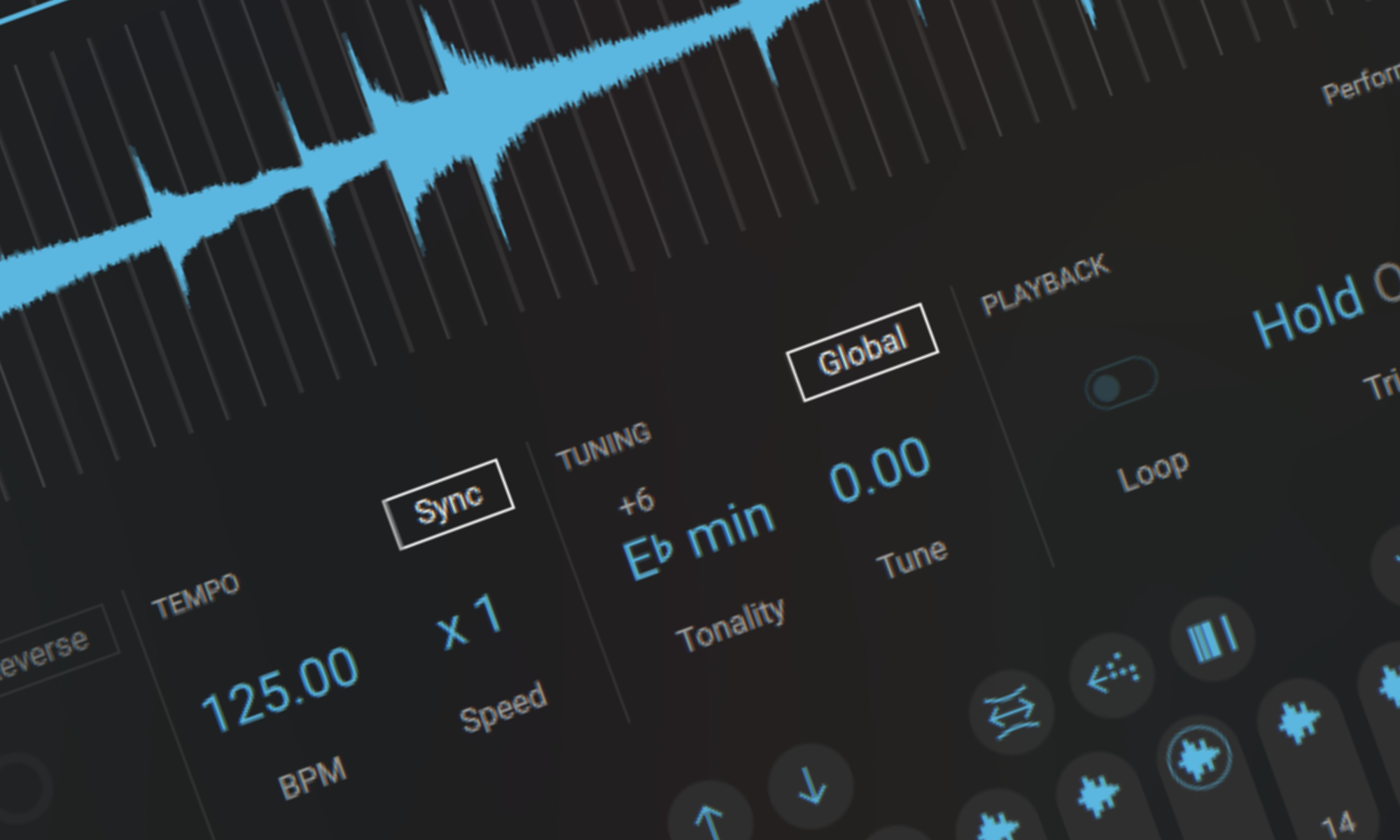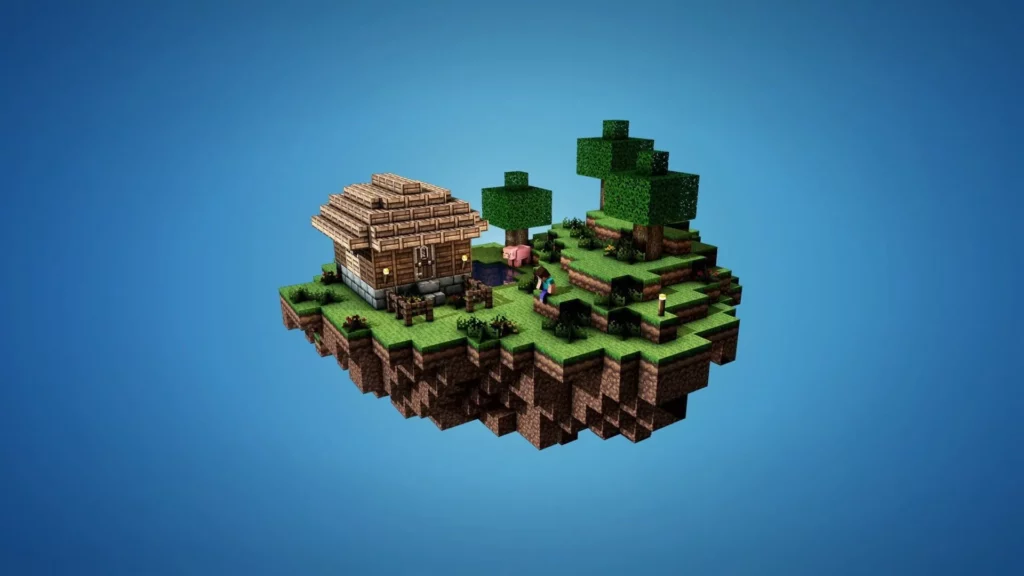Once played on modest grids sprinkled with mines, today’s game can escalate to sprawling battlefields housing a staggering 1000 mines. In our feature, “Inside the Grid: An Analytical Deep Dive into Minesweeper on 1000 Mines,” we delve into the heightened tension and tactical complexity of navigating such dense minefields. This comprehensive guide will escort you from the foundational rules and techniques to the pinnacle of Minesweeper mastery. Whether you’re a veteran detonator or a fresh recruit eager to test your mettle, prepare for an explosive odyssey across the grid that promises both peril and exhilaration.
Understanding the Basics: Rules and Setup
Enrolling yourself in the game’s core mechanics is essential before diving into the vast sea of a 1000-mine Minesweeper grid. Picture yourself at the helm of a rectangular grid, each cell a potential mine or a haven of safety. Your mission: clear the non-mined cells, guided by numerical clues from adjacent cells that whisper the number of hidden dangers lurking nearby. This puzzle, simple in its design yet intricate in execution, becomes a thrilling test of wit as you use these hints to weave through the grid’s dangers. But when the playing field balloons to accommodate 1000 mines, every move you make is weighted with greater risk and requires a keener strategic mind. The expanded grid, far more extensive than the cozy confines of the classic setups, not only intensifies the challenge but also demands a deeper engagement and sharper focus to master the mine-laden expanses.
Advanced Strategies for Large Grids
Playing Minesweeper on a grid with 1000 mines requires understanding the basic rules and deploying advanced strategies to manage the increased complexity. One key strategy is the “corner start,” where players begin by opening cells in the corners of the grid. Corners have fewer adjacent cells, so they often provide more definitive information early on, helping to reveal larger sections of the grid safely reveal larger grid sections.
Another advanced technique involves pattern recognition. Experienced players familiarize themselves with standard mine configurations, which can speed up decision-making processes and reduce the reliance on guesswork. Additionally, probabilistic reasoning can play a crucial role in Minesweeper with 1000 mines. Players may need to calculate risks based on the likelihood of mines being in certain positions, especially in later stages of the game when safe moves are not immediately apparent.
Technological Aids and Software Insights
With the complexity of Minesweeper on 1000 mines, even seasoned players may seek assistance from various technological aids. Software tools and Minesweeper solvers are available, which can analyze the grid and suggest moves. These tools use algorithms to calculate probabilities and identify the safest spots to click next. However, relying solely on technology can detract from Minesweeper’s challenge and satisfaction. Thus, while these aids can be helpful, especially for learning and improving, they should be used judiciously to maintain the integrity of the game experience.
In-depth analysis tools can also provide insights into your playing style, highlighting common mistakes or overlooked patterns. These analytics can be invaluable for refining strategies and improving overall gameplay efficiency.
Challenges and Frustrations of High-Density Mines
Playing Minesweeper with 1000 mines introduces unique challenges that test even the most experienced players. One major challenge is the increased likelihood of having to make a guess. In high-density mine configurations, players often reach a point where no logical deduction can safely reveal the next cell. These scenarios require a risk-based approach, which can be thrilling and frustrating.
Additionally, the sheer size of the grid can lead to longer game times and more significant mental fatigue. Keeping track of many cells and mines increases the cognitive load, making sustained attention and concentration critical. Players must also manage their frustration and maintain a steady pace, as rushing through moves in such complex settings often leads to mistakes.
Conclusion
“Minesweeper on 1000 Mines” is not just a game of chance but a battle of wits and patience. It challenges players to hone their logical thinking and decision-making skills under pressure. While the jump from smaller grids to one with 1000 mines might seem daunting, it offers an exhilarating challenge that can significantly sharpen one’s cognitive abilities. Whether using it as a training tool to enhance your analytical skills or to enjoy a classic game on a larger scale, Minesweeper with 1000 Mines promises a complex, engaging, and rewarding experience. Dive into the grid, and let each click lead you through a minefield of strategic discovery.
Hello from the Magnetic editorial desk.









